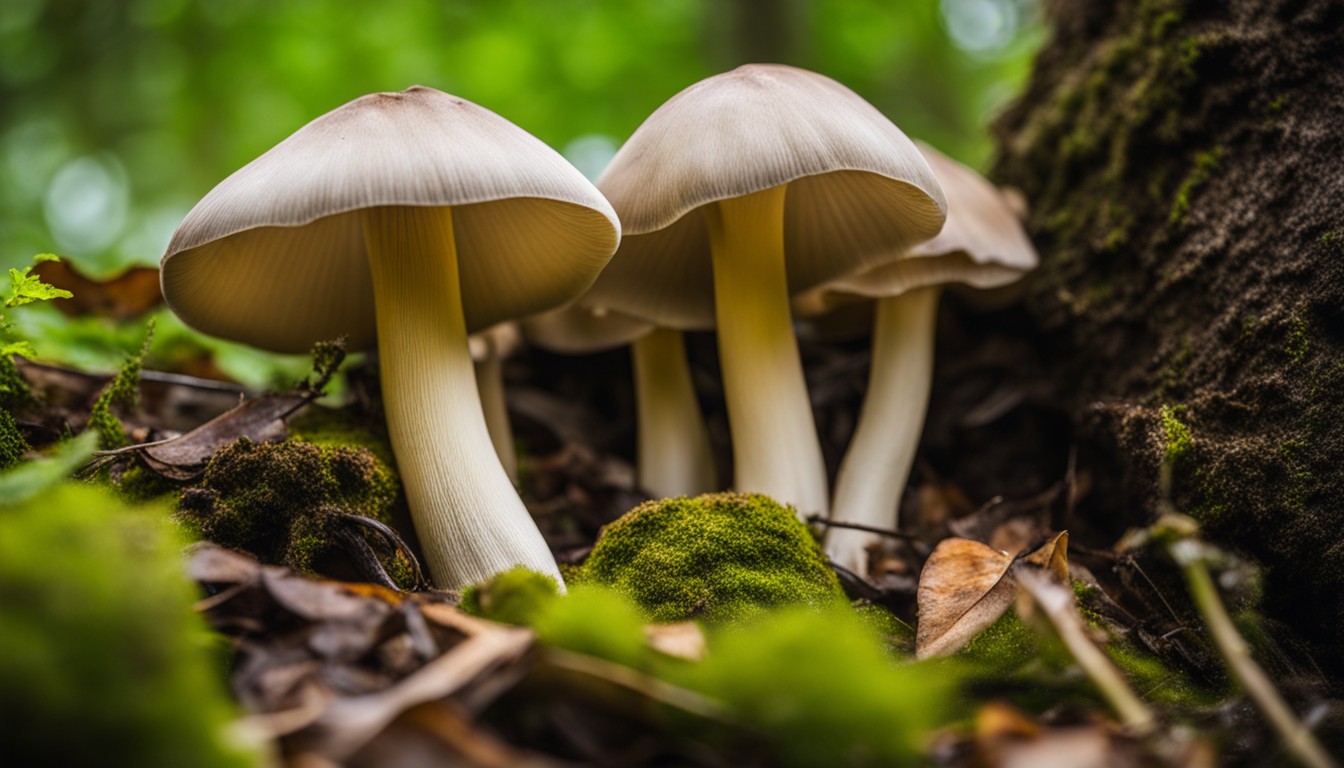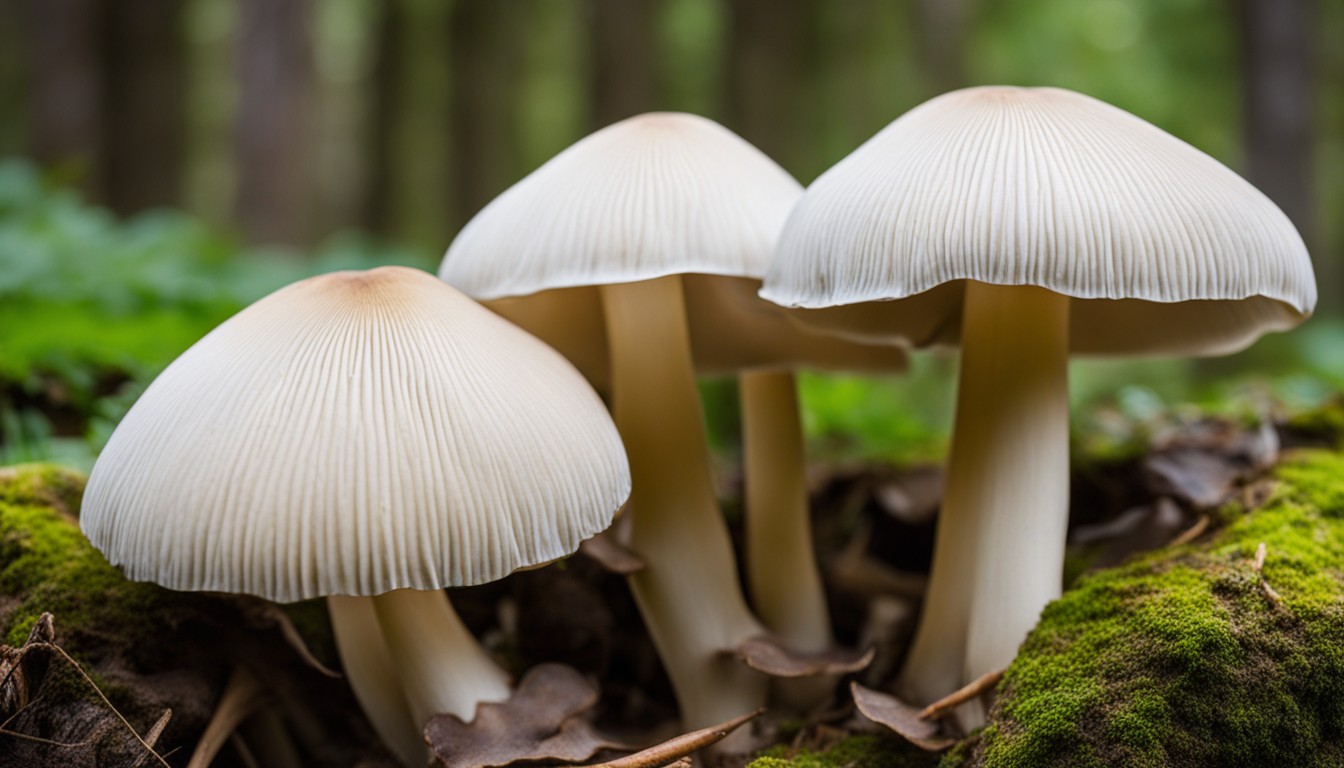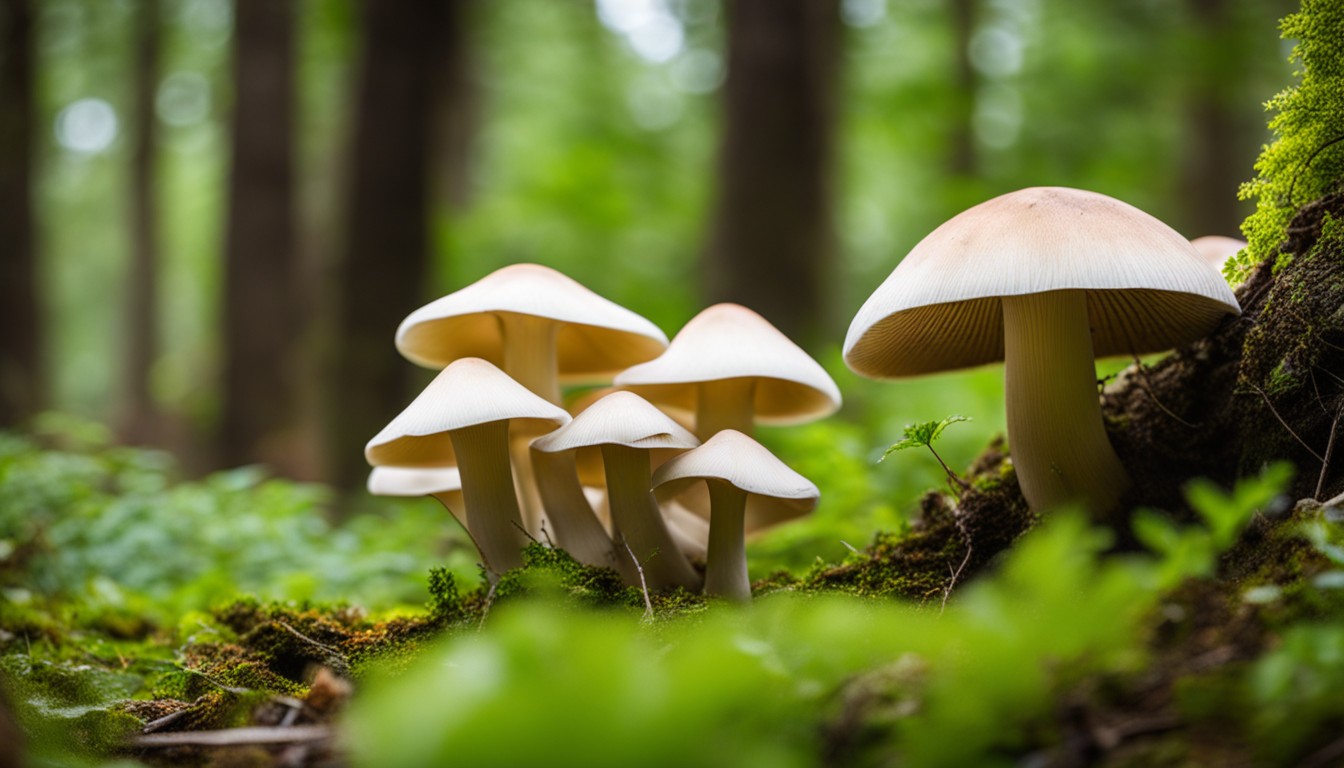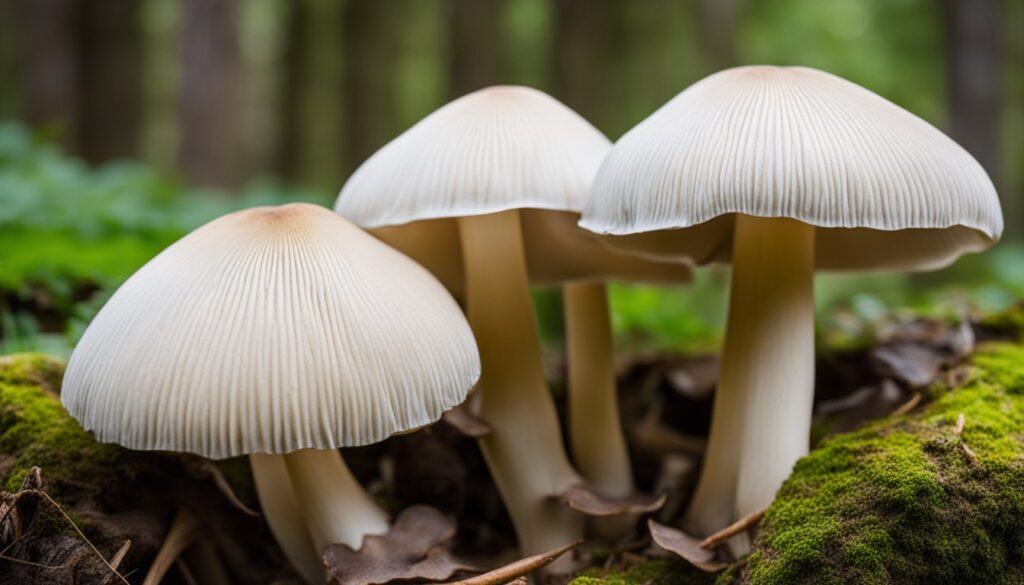New Hampshire is a treasure trove for mushroom enthusiasts, offering a plethora of diverse fungi species waiting to be discovered. From the enchanting forests of the White Mountains to the secluded corners of the Lakes Region, the state is home to a rich variety of mushrooms that are both fascinating and awe-inspiring. Whether you’re an aspiring mycologist or simply a nature enthusiast, exploring the world of NH mushrooms is sure to ignite your curiosity and deepen your appreciation for the hidden wonders of the fungal kingdom. So grab your mushroom guidebook, don your hiking boots, and embark on an adventure to uncover the hidden gems that lie beneath the forest floor in New Hampshire.
The Fascinating World of Fungi
Beneath the woodland canopy of New Hampshire, a diverse palette of fungi adds depth to the landscape. From delicate elfin saddles to towering shaggy manes, the state boasts a captivating array of mycelium that contributes to its rich biodiversity.
Renowned for their uncanny abilities to decompose organic matter and exchange nutrients with trees through mycorrhizal relationships, fungi are fascinating. New Hampshire’s fungi range from simple bread molds to complex mushroom structures, narrating a diverse story of the fungal family tree.
Why Mushrooms are Important to Ecosystems
A crucial component in New Hampshire’s forests, mushrooms perform vital tasks that ensure soil health. As they decompose organic material, they contribute to the soil’s fertility and maintain its structural integrity, preventing erosion.
Beyond culinary and medicinal benefits, mushrooms significantly uphold ecosystem health as nature’s noteworthy recyclers, enhancing soil fertility and playing a key role in nutrient cycles.
They act as nature’s recyclers, breaking down complex material such as dead leaves, wood, and animal droppings into simpler elements.
In this process, they contribute to nutrient cycles, releasing essential elements back into the environment, readily available for plant uptake.
When we observe the vital contribution of mushrooms to ecosystem health, it’s clear that their role extends much beyond being culinary delights and medicinal resources. They are indeed the unsung heroes of our forests.
Types of Mushroom Species in New Hampshire
New Hampshire’s woodland areas are a diverse haven for myriad mushroom species. The urban landscapes, too, surprise with their friendly fungi diversity.
- Red-belted polypore: Thriving in woodland areas, predominantly on dead conifers.
- Artist’s conk: A woodland-exquisite that grows on deciduous trees, recognized by its distinctive underside which darkens when etched.
- Hen of the woods: Known for its rosette shape, found at the base of oak trees in urban areas.
- Mica Cap: Adaptable urban-friendly variety, spotted near compost heaps and mulched gardens.
- Lion’s Mane: A unique, waterfall-like mushroom found on dead and decaying hardwood trees in forests and some urban settings.
Edible Mushrooms Found in New Hampshire
New Hampshire offers an impressive variety of edible mushrooms for foraging enthusiasts and gourmets alike, delivering a unique culinary journey with each season that marks different periods for mushroom hunting.
- Chanterelles: Known for their golden color, they are typically found in hardwood forests during the summer and fall.
- Morels: Treasured by chefs for their distinct flavor, look for these in the spring, usually amid apple orchards or near dead elm trees.
- Hen of the Woods: Also known as Maitake, this valuable mushroom often grows near oak trees in the fall.
- Black Trumpets: These delicacies thrive in wet, mossy areas during the summer months and bring a smoky, rich flavor.
- Porcini: Found in pine forests throughout late spring and early summer, they are a prized ingredient in Italian cuisine.
Exploring the Medicinal Properties of NH Mushrooms
The rich biodiversity of NH mushrooms plays a vital role beyond culinary uses – it expands into the realm of health and medicine. A number of these fungi boast medicinal properties, promising natural solutions for ailments ranging from high cholesterol to immune system disorders.
Ancient wisdom regarding medicinal abilities of New Hampshire’s mushrooms is being progressively validated by current scientific study. The state’s traditional practices leveraged fungi species like Reishi and Chaga, recognized now for their anti-inflammatory and antioxidant qualities.
Where to Find Mushrooms in New Hampshire

New Hampshire’s fungal hotspots are scattered all around, from dense woodland to grassy meadows. Knowledge of these loci can make your mushroom hunting more fruitful, unveiling hidden fungal treasures at every turn.
With an array of iconic sites such as White Mountains and Pisgah State Park, the state’s landscape offers a wide diversity of mushrooms. These locations are truly a mycophile’s paradise, presenting many unique mushroom species treasured not only for their culinary, but also, health value.
Popular Mushroom Hunt Locations
Embarking on a fungal journey in New Hampshire reveals a myriad of famed locations, celebrated for their rich diversity of mushroom species. These top-rated trails and spots are highly recommended for their prolific appearances of edible mushroom variants, making them a prime destination for mushroom hunters.
- Bear Brook State Park: Known for its population of chanterelles and morel varieties.
- White Mountain National Forest: An abundant source of king bolete and hedgehog mushrooms.
- Pisgah State Park: A celebrated destination for foragers keen on identifying fly agaric and reishi mushrooms.
- Franconia Notch State Park: Frequented by foragers for its ample supply of birch polypore and turkey tail fungi.
Best Times of the Year for Mushroom Hunting
The beautiful state of New Hampshire offers a rich diversity of mushrooms year-round but the optimal time for mycophiles to hunt mushrooms is during the warmer months, particularly from late spring to early fall.
- When the forest flourishes: Typically, peak mushroom season in New Hampshire is from May through October.
- A seasonal guide to NH’s best mushroom-hunting times: Late spring and early summer are prime times for finding morels while chanterelles and boletes proliferate in late summer and early fall.
Safety Tips for Mushroom Foraging
Safety in mushroom foraging entails more than just accurately identifying edible species. It’s also about navigating the terrain securely, equipping yourself with the right tools, and respecting the environment you’re exploring.
- Equip yourself with a foraging guidebook, a knife, and a basket.
- Go on your first few foraging trips with an experienced guide or group.
- Always stay on marked paths to preserve habitats and avoid getting lost.
- Never consume a mushroom that hasn’t been definitively identified as edible.
- Respect private property—always ask for permission before foraging.
Identifying Mushrooms: A Beginner’s Guide
Entering the magical world of fungi embarks you upon a journey that requires a discerning eye and a seasoned guidebook. A novice’s toolkit for mushroom identification would ideally include a hand lens for minute details, a knife for collection, a basket for storage, and comprehensive field guide for information.
The process of identifying mushrooms can be rather daunting for beginners. However, with a keen eye on physical characteristics like shape, color, smell, and spore prints, along with reliable guidebooks and online resources, even the most inexperienced mycologists can learn to navigate the fascinating world of fungi easily and safely.
Key Features to Look For
To differentiate New Hampshire (NH) fungi, pay close attention to subtle features. The cap shape, size, color, stem characteristics, and spore print color are all key identifiers of specific mushrooms.
Some strains prevalent in NH express unique markers, thus pointing towards their identity. For instance, the cap of the Red Chanterelles displays deep ridges, acting as a clear signpost, while the Bicolor Bolete exhibits distinct color variations between the cap and the stem.
Common Mistakes to Avoid
Attempting to identify mushrooms based solely on images is one common error. The varied and complex morphology of fungi can easily lead to misinterpretation. It is recommended to cross-reference with detailed descriptions in guidebooks or reputable online resources.
In one’s eagerness to forage, prematurely picking an immature mushroom could cause misunderstanding about its characteristics. By allowing fungi to fully mature before harvesting, we ensure accurate identification.
Mushrooms constantly evolve, and some can develop irregular features. Misinterpretation can occur if you’re not mindful of this. Keeping abreast of current mycological research can equip you with the knowledge to correctly identify these exceptions.
One might assume NH mushrooms resemble those from other regions. Yet, local climates significantly influence their growth and appearance. This highlights the importance of using region-specific guides to avoid this error.
A serious mistake is ignoring signs of contamination or disease on the mushroom. Consuming affected mushrooms can lead to health complications. Always ensure to thoroughly inspect and clean foraged mushrooms. To bolster your awareness, educate yourself about common indications of fungal diseases.
Using Guidebooks and Online Resources
Embracing technology’s remarkable contributions to fungi exploration, enthusiast mushroom seekers are leveraging digital resources. Mushroom identification apps and online forums specifically geared towards New Hampshire have made it easier to safely recognize and learn about different mushroom species.
Traditional guidebooks continue to play a vital role in mastering mushroom identification. Filled with detailed illustrations, descriptions, and locale-specific information, these books are invaluable tools for New Hampshire’s foragers, offering the tactile pleasure of flipping through pages while learning.
Conservation Efforts for NH Mushrooms

Preserving mushroom biodiversity in New Hampshire is the central focus of numerous conservation initiatives, which are termed ‘Shielding our Sporocarps’. These sophisticated plans are intended to create safe havens for many threatened fungal species.
Mushroom enthusiasts play a significant role in mushroom conservation in New Hampshire, bridging the gap between the action-oriented initiatives and public support. Their genuine interest in understanding and preserving the fungal population contributes significantly to these efforts.
Threats to Mushroom Habitats
The escalating threats to mushroom habitats in New Hampshire predominantly stem from ecosystem disruptions. Factors like deforestation, pollution, urbanization, and over-harvesting contribute to a less than hospitable environment for these fungi.
Illuminating these disturbances are essential as they can pose a substantial risk to the diversity and longevity of our local mushroom species, causing irreversible damage if left unchecked.
Climate change presents another destabilizing factor. It can cause fluctuations in temperature and precipitations, altering the mushrooms’ traditional growing seasons and posing survival challenges.
Collectively, these elements forecast a ‘Fungal Crisis’. Addressing these threats necessitates conscious and concerted effort from the community, encouraging sustainable practices and advocating for climate change mitigation.
The Importance of Sustainable Mushroom Harvesting
Upholding the fungal equilibrium in New Hampshire is crucial. Overharvesting can disrupt this delicate balance, leading to ecosystem instability and potential loss of specific mushrooms species. The sustainability of fungi is as important as that of the flora and fauna.
Our local landscapes reflect the delicate interplay between various lifeforms, with fungi acting as life’s decomposers. Their vanishing due to overharvesting could have unimaginable ripple effects, highlighting the importance of sustainable mushroom harvesting.
New Hampshire has seen a rise in conservation programs, focusing on sustainable mushroom harvesting. These grassroots initiatives are testament to conscious efforts being made towards ecological fortitude, elevating the importance of the region’s mushroom species.
A particular case study of sustainable mushroom harvesting is the ‘NH Fungus Fair’. Using meticulous harvesting techniques, they aim to educate the masses, sensitizing them about the significance of preserving the equilibrium of our valuable fungal ecosystems.
Supporting Local Mushroom Farms and Businesses
Local mushroom farms in New Hampshire are the backbone of the thriving fungi industry. With an array of diverse species being cultivated, these establishments provide a unique opportunity for enthusiasts and novices alike to delve into the world of mushrooms.
Patronizing local mushroom businesses in NH sheds light on the economic significance of fungi. These businesses promote local economy growth, boost tourism and contribute to the state’s unique biodiversity.
Moreover, by supporting these local businesses, individuals aid in preserving our rich ecosystem. Every mushroom sold equates to a sustained mushroom existence.
Finally, by purchasing from local farms, you are tapping directly into the heart of NH’s mushroom industry. It’s an act of solidarity that strengthens the community, supports sustainable farming, and bolsters New Hampshire’s mushroom heritage.
Cooking with NH Mushrooms

Embark on a gastronomic adventure by inviting the richness of New Hampshire mushrooms into your kitchen. Their unique flavors and textures can transform ordinary meals into standout dishes.
Incorporating local mushrooms into your recipes can unleash your culinary creativity. Whether it be a hearty stew or an intricate appetizer, mushrooms can bring depth and complexity to a myriad of dishes.
Delicious Recipes Using Local Mushrooms
Embracing the wholesome goodness of New Hampshire’s fungi, a slew of healthy and exotic mushroom recipes unlock a world of culinary delights. These dishes, rich in nutrients and bold in flavor, celebrate the region’s bountiful mushroom diversity.
Join a gastronomic celebration with exciting New Hampshire mushroom recipes you can cook at home. From Stir-fried Morels to Chaga Mushroom tea, enjoy the rich tapestry of taste profiles as you experience the unique essence of NH’s local mushrooms.
Tips for Properly Cleaning and Storing Mushrooms
To maximize the longevity of your mushrooms, cleaning and storing them properly is crucial. Brush off any dirt lightly, avoid washing them if possible, and store in a loosely closed paper bag in your refrigerator’s crisper drawer. This allows the mushrooms to breathe, avoid excess moisture and maintain freshness.
Preserving the freshness of harvested NH mushrooms can significantly unlock their potential flavors. It is advised not to clean your mushrooms before you’re ready to use them. Mushrooms, due to their high water content, can absorb more water, which can affect their texture and flavor.
Avoid removing the stems prior to storage, as intact mushrooms stay fresh for longer. When ready to use, separate the stem from the cap. Stems can be frozen and used later as flavor enhancers in soup or broth.
To enhance the delicious natural flavors, you may consider dehydrating your mushrooms. Once dried, store them in an airtight container to prevent reabsorption of moisture. Dried mushrooms can be rehydrated when needed, providing year-round culinary delights.
If you’re blessed with a bountiful harvest and cannot consume all at once, consider freezing your mushrooms. Clean, slice and sauté them lightly before freezing. This will protect their texture and flavor when you’re ready to use them in your favorite recipes.
Frequently Asked Questions about NH Mushrooms
What role do mushrooms play in enriching our ecosystem?
Mushrooms play a crucial role in the ecosystem as they break down organic matter, aiding in nutrient cycling and soil enrichment.
How can I discover and identify mushrooms in New Hampshire?
To discover and identify mushrooms in New Hampshire, it is recommended to join guided mushroom forays led by experienced mycologists or to consult field guides specific to the region.
Can I harvest mushrooms for culinary purposes in New Hampshire?
While certain mushrooms in New Hampshire are edible, it is important to have expert knowledge or consult with a mycologist to ensure accurate identification and sustainable harvesting practices.
Are there any poisonous mushrooms in New Hampshire?
Yes, there are poisonous mushrooms in New Hampshire, and it is crucial to exercise caution and never consume mushrooms without accurate identification from a trusted mycologist.
How can I sustainably harvest mushrooms in New Hampshire?
To sustainably harvest mushrooms in New Hampshire, it is essential to only collect mature specimens, leave behind small or young mushrooms, and avoid damaging the surrounding habitat. It is also recommended to harvest only for personal use and not for commercial purposes.
Are there any regulations or permits required for mushroom foraging in New Hampshire?
While recreational mushroom foraging generally does not require permits in New Hampshire, it is advisable to check with local authorities or landowners for any specific regulations or restrictions before harvesting mushrooms.
Can I cultivate my own mushrooms in New Hampshire?
Yes, it is possible to cultivate your own mushrooms in New Hampshire. Many mushroom species can be successfully grown at home using kits or by creating your own growing environment.
Is it safe to eat wild mushrooms found in New Hampshire?
It is crucial to exercise extreme caution when consuming wild mushrooms in New Hampshire. Only consume mushrooms that have been accurately identified by a trusted mycologist, and never ingest any wild mushrooms without proper knowledge and expertise.
Where can I learn more about NH mushrooms and mycology?
To learn more about NH mushrooms and mycology, consider joining local mycological societies, attending workshops or forays, and exploring reputable online resources and books dedicated to mushrooms and fungi in the region.
Conclusion
Mushrooms in New Hampshire tell an ever-unfolding story of diversity, new discoveries, and advancements in the world of mycology. This fungal tale offers profound insights into ecology, mycoremediation, foraging, gastronomy, and even health through medicinal applications.
- There are countless species of mushrooms in New Hampshire contributing to a vibrant ecosystem.
- Foragers can discover edible, medicinal, and rare mushroom species throughout the state.
- Mushroom picking comes with responsibility; sustainable harvesting is essential for preserving this resource.
- Not just for foragers and chefs, mushrooms contribute greatly to local businesses, farming, and conservation efforts.

